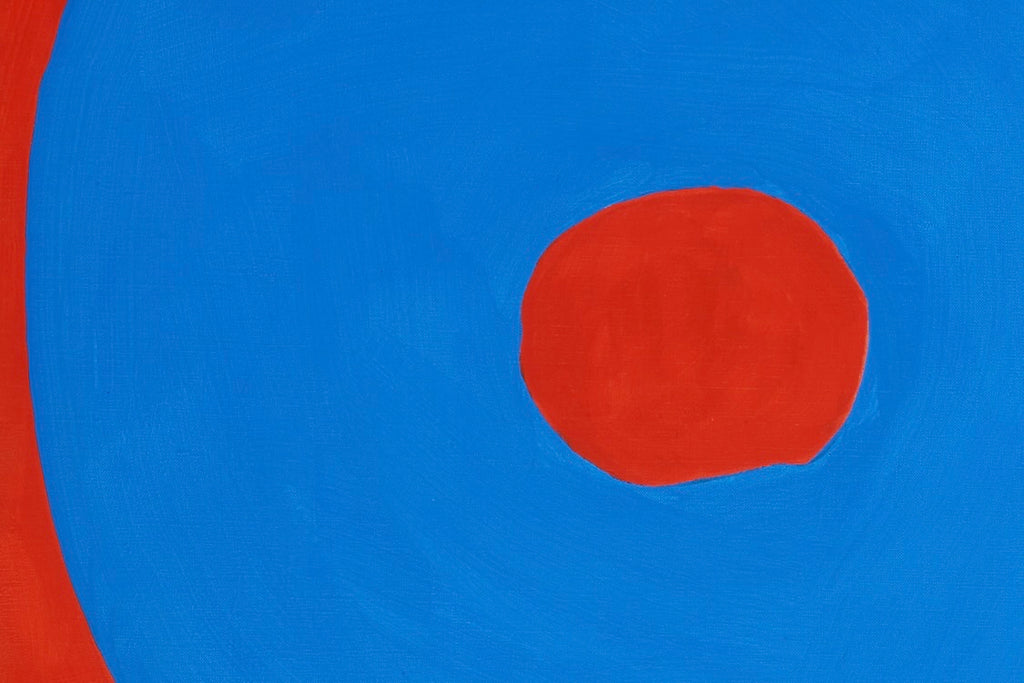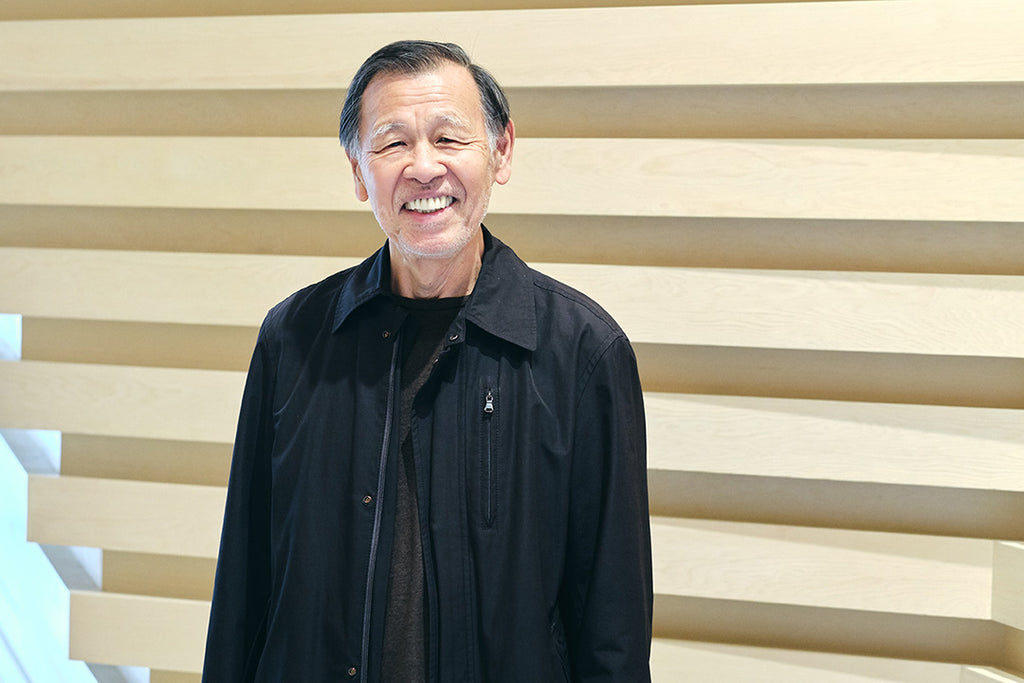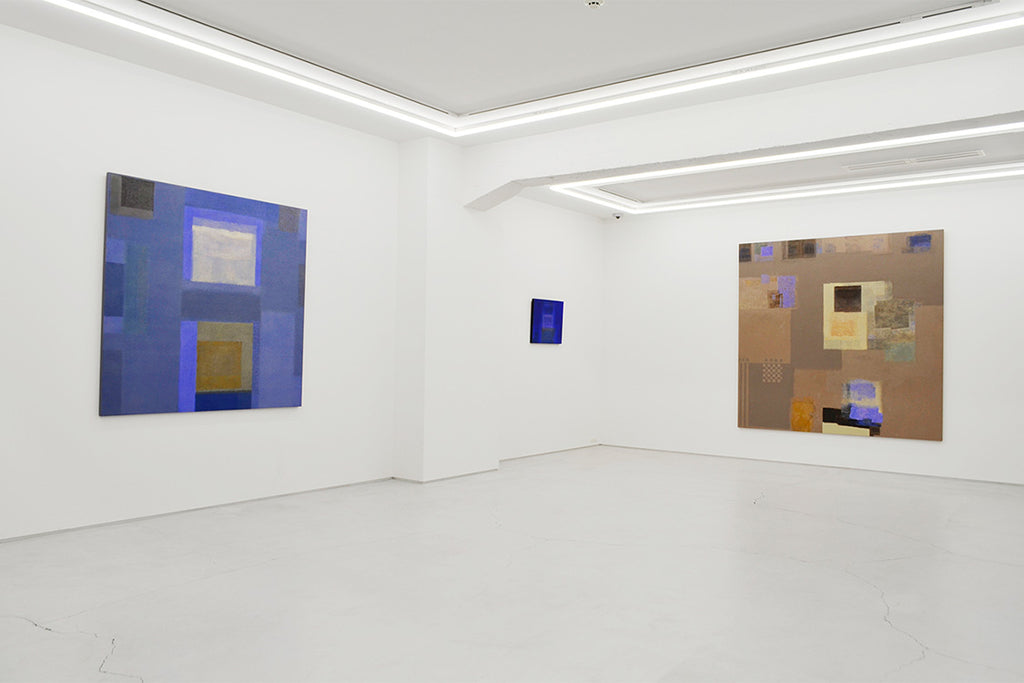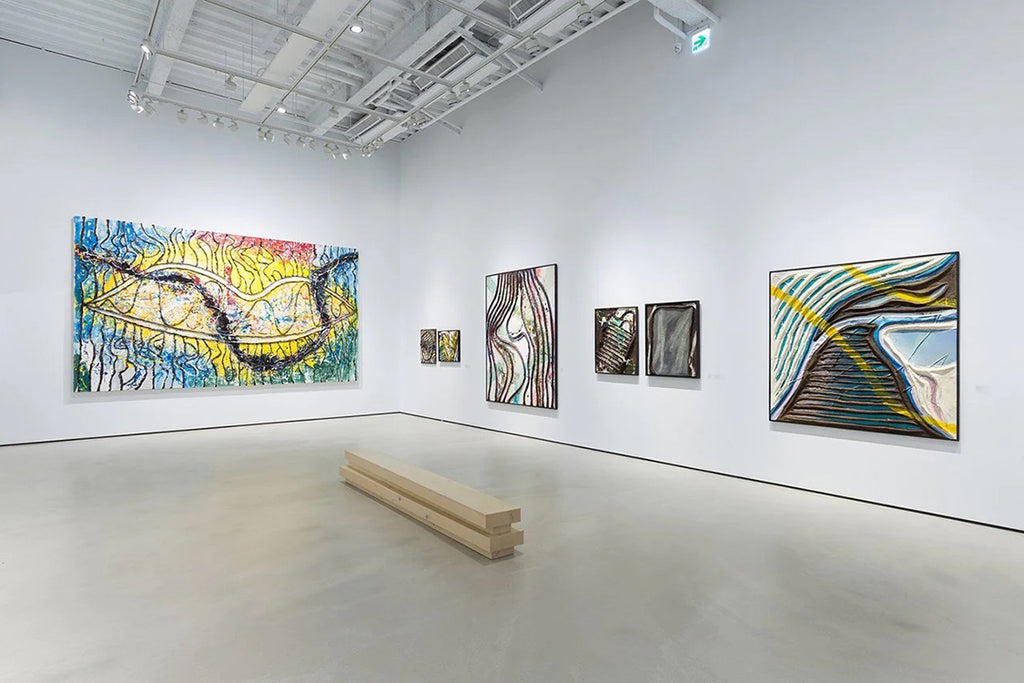ARTICLES
Why Are Art Funds Needed in Asia?
A New Appreciation Contemporary Japanese and Asian Art
14/23

A New Appreciation Contemporary Japanese and Asian Art
In our ongoing series, we present the digital archive of the book 'A New Appreciation Contemporary Japanese and Asian Art' This book delves into internationally acclaimed artists and the dynamics of the Asian art market. The fourteenth installment features a conversation between Yukio Shiraishi and Edward J. Rogers.
Why Are Art Funds Needed in Asia?|Interviews of Experts in the Art Industry
Yukio Shiraishi
Chairman, Whitestone
Edward J. Rogers
Rogers Investment Adviser
Similar to the Japanese who went to Paris, Italy, and the United States to study af- ter the war, people from Asian countries like Vietnam, Indonesia, and Malaysia have chosen Japan as their destination. In that sense, Japan is an important refer- ence, but Hong Kong has become increasingly important with the rise of China. Therefore, I started my art fund in Hong Kong. (Shiraishi)
An Art Fund for both Collectors and Painters
Shiraishi: I have been thinking and preparing the art fund for about three years. I am looking forward to talking to Mr. Rogers today. I was introduced to Mr. Rogers through a person affiliated with Nomura Securities Co., Ltd. I believe that working with you is an arrangement made by God, and thus, I would like to proceed with the project while fully trusting you.
Rogers: Thank you very much. I am excited that putting together an Art Fund on this occasion with Chairman Shiraishi will be a wonderful and beautiful thing. It is great to work with you on the art fund project. The art world in which Chairman Shiraishi is working is not my world, but there is no doubt that many people are interested in it. As a specialist in financial products, I’d like to do everything I can.What I would like to ask first is: What made you plan to create the art fund three years ago?
Shiraishi: I started the actual process of the fund three years ago, but the preparation that went into it began a decade ago. I had a strong vision that a fund was needed for the future of the Japanese and Asian art world. If the fund had no benefits for society, I would not have planned it or participated in it.
I would like to start the fund because it is necessary for the current world of art in Japan and Asia. Today, painters can sell their own artworks and make a living. All the Chinese artists have lived that way, too. They painted and sold their artworks on their own before the economy was liberalized. In Japan, painters paint and galleries sell their works.
That’s where auction houses come in. However, auction houses have become too powerful today, and Sotheby’s and Christie’s are bringing up their handling fee, which used to be ten percent, to twenty-five to thirty percent. If the handling fee becomes higher, all the profits are sucked into the auction houses each time a work is auctioned. Collectors need to cover the fee whenever they purchase the work through an auction. It then makes more sense to participate in an art fund. I want to make an art fund that benefits both collectors and painters.
Rogers: Let’s say, when a painting is sold at over one hundred million yen, how do the fees charged by auction houses like Sotheby’s and Christie’s compare to those of galleries?
Shiraishi: The handling fee of auction houses in Japan is about ten to twelve percent in Japan. Sotheby’s and Christies’ charges twenty to twenty-five. Those of galleries are unclear since they vary individually.Rogers: Are these paintings sold through the auction route or the gallery route?
Shiraishi: Both. I visited a famous collector in Dallas the other day. He does not purchase paintings in auctions. He said he did not want to cover the handling fee. “It is cheaper to hire an art advisor than paying handling fees for the auction,” he said.That is how big collectors in the United States think. There are about fifty collectors like him, and the development of such collectors is linked to the museum managements today. They contribute to building collections at public and private museums. This episode is connected to Asia needing funds, since there are no such advisors in Asia. Even in the United States, Mr. Gagosian of G gallery probably runs some sort of fund in the back though it might not be open publicly. He purchases works displayed in his gallery exhibition using his group fund. When I asked him why he buys paintings from Asia, he said that they were still cheap. Buying artworks is an investment.
Rogers: Regarding the content of the art fund, I’d like to ask how money is made through these art pieces. I’ve heard of Japanese artists who are masters to some extent, such as Yayoi Kusama. Do you actually make money with that, or, for example, do you buy up pieces from young unknown artists and raise them up by decorating the pieces in various exhibitions? Or is it a blend of these two?

Left: Yukio Shiraishi Right: Edward J. Rogers Talking passionately about the art fund.
Post-war Japanese Art Is Still Cheap
Shiraishi: I wish you would have studied our materials better in advance. Our work is primarily to cultivate the artists, but there are two ways to do so. While we help the young artists to develop, we also work on increasing the value of the established artists’ works. What is important is that we do not sell the works of the fund artists for five years. For instance, Tadaaki Kuwayama is eighty-eight years old now. He studied Japanese Painting at Tokyo University of the Arts but moved to the United States while doubting his future in Japan. [Showing the work list] This is the work produced when he first developed from Japanese painting to abstract ones. This, of course, did not sell then. It was a time when minimal art was expanding in the United States. The trend changed from minimal art to pop art. While Kuwayama continued pursuing the world of abstract, he never considered himself as a minimal artist. In Singapore, a new national museum was recently opened. They recently had a very successful Yayoi Kusama exhibition, and did an exhibition from minimal art to contemporary art in the United States. In the exhibition, they had a section called black room where Kuwayama’s black painting is displayed with Mark Rothko, Barnett Newman, and other masters of Abstract Expressionism.
Kuwayama’s work is currently between fifteen to twenty-five million yen while those of Rothko and Newman are between five to ten billion yen. A VIP collector who owns buildings and even his own museum in Jakarta came to the museum to see the exhibition. I told him about the fund and explained him that this price difference is the reason why I created a fund for Kuwayama’s work. He told me that he really wants two of Kuwayama’s works and one work by Kusama exhibited at the museum. I told him that I could not give him an answer until the exhibition ended, and he then called me every day. I, therefore, received the permission from the artists to sell the works to me. I then told him that the works will go to either this museum or his museum from here. I also asked him to promise to hold this artist’s solo exhibition as the first priority. That was the time I told him about the fund. I would like to sell the fund to those who I trust since I do not know institutional investors.
Rogers: I have great respect for those with a wide range of trustworthy contacts, such as yourself. I do not specialize in the art field. My specialty is to create funds, and we have set up eight hedge funds in the past, ranging from $50 million to $1 billion. I am no where close to the 50 years of experience Chairman Shiraishi has in the art industry, however I am confident about my field and the work we do.
Shiraishi: Post-war Japanese artworks are still cheap. The Dallas collector whom I mentioned earlier buys the works of Japanese and Asian artists whose art work values are expected to increase and donates them to museums in Dallas. Both the collector and museum are pleased if I inform them about the increasing value of the works. They showed me the displayed works the other day and told me that he would purchase more works to enhance his collections. He is a financial dealer. He introduced me to several people on the west coast, and they have bought works from me. Although I would like various investors to buy the fund in the future, I would like to start promoting the fund exclusively. I have sold the work by Gutai’s Chiyu Uemae for seven million yen. The work is now worth eighty to one hundred million yen years ago. I have bought the instrument trust funds for the sake of good relations with securities companies, but they have never been profitable. I’ve been making a living off art, and I want other people to experience this too. But in order to do this, we need a lot of capital, and having a fund is helpful. And we have to show performance records that it works to gain trust. However, our fund is small. Therefore, after managing the first one, if I start, let’s say, a thirty billion yen fund, I need to spend time to collect the paintings and raise money. In order to bring in institutional investors, I need to show how much has increased the value of the first and second funds. I need to achieve good performance so that I can earn their trust.
Rogers: For that, track record and data are very important. The process behind the fund, the independent third-party administrator, or the people who do independent verification becomes essential.
Shiraishi: For instance, I will create the first and second fund on my own and create one after another. Investments narrow down to such undervalued art works which immediate value appreciation is anticipated. The following funds will be promoted with the track record of previous one. At some point, institutional investors who see not only the paintings, but also the track record. The value of the previous fund will increase as new fund starts investing. Undervalued Japanese art market will take off as fund provides liquidity.
Virtuous cycle is created and it is important to start buying the works as quickly as possible. If possible, I would like to do so by working with supporters. If supporting investors cannot be found, I will purchase artworks in the free art fund style like what we do now. We need to continue buying to maintain the target return. If we continue buying, the performance of the fund will be better. Therefore, I recommend you buy the first and second funds if you have enough savings. I really mean it.
If these funds go down and the dividend becomes zero, my fifty year-career will be lost. Even with my own fund, I have always increased the value of Japanese paintings. Contemporary art has increased its value, too. However, since the field becomes larger at the international level, my personal fund is not enough. The financial power determines the success of the fund. That is why I am working on the fund. Since there is no art funds in Japan, artworks are not consider as financial assets. No banks in Japan can take artworks, even those by Impressionists like Renoir and Picasso, as collateral. It is very rare in developed countries. Therefore, the first fund needs to be set up to turn the existing system and make it equivalent to that of Europe or the United States. Since it cannot be done in Japan, I am doing this in Asia based in Hong Kong. Today’s talk was arranged since the people from Nomura Securities, the number one investment banker in Japan, suggested that I and Mr. Rogers create art fund together. By the way what made you want to do an art fund in Japan?
Past, Present, and Future Will Be Packaged under the Name of the Fund
Rogers: I came to Japan thirty years ago. I came here to know how Japan was changing under the influences of the West, and I was fascinated by the transformation of the country. What surprised me most is that Japan did not even have.
railroads when the country opened up the door to foreign countries in 1868 after a long period of closure.
Yet, after a mere 30 or so years, Japan won against Russia in the Russo-Japanese War between 1903 and 1905. It was the first time in the five hundred years since Genghis Khan that an Asian country defeats a Western country. I grew up in the United States during the 1970s and 80s, and at that time Japanese companies powerful enough to beat American companies in the market, such as Toyota, Honda, Nippon Steel, and Sony and so on. Witnessing this has sparked my curiosity as to how Japanese people can make such extraordinary and astonishing achievements. I came to Japan to find out how Japanese people are different from people in other countries, and to confirm with my own eyes that the Japanese can achieve success continuously. The answer I found is that Japanese culture is completely different from Western culture, and I believe Japanese people’s behaviors are better understood if the culture is understood. This leads me to a point of which, art is the best medium to express culture, and I am hoping to be of help, even a little, to inform about Japanese culture overseas. I work with investors to better their understanding towards investments, and if I get to help them understand more about Japanese culture, I believe better investments can be made into Japan from overseas. It is very difficult to understand Japan from a foreigner’s perspective. I, myself, have been in Japan for 30 years, but it is difficult as a foreigner to understand not only Japanese culture, but other Asian cultures. Art is very important in a sense that it acts like a bridge for us to better understand each other.
Shiraishi: Mr. Rogers truly understands art. Human lives themselves are a form of art. I was born in 1944 and lived through the post-war era. Since I was small, vari- ous cultures came to Japan, which may have blinded some Japanese. However, art- works still reflect the times.
Art is a mirror that reflect the times. Japan became a first developed nation in Asia and a major economic power. But that is because we lost the war. While many people were killed in the war, no Japanese express hatred against the United Sates. It is because the United States brought more to Japan including a democratic lifestyle, freedom, peace, and a form of love that did not exist before.
I have introduced artists from these times and created a fund as a package of their works. Past, present, and future are packaged under the name of the fund. Its economic value may increase ten, twenty, and even one hundred times. However, packaging the trace of individual lives that art has actualized is more important than making profits. While we wanted to create an art fund in Japan, Japan has become a country where many people from Asian countries like Vietnam, Indonesia, and Malaysia visit, just as the Japanese visited Paris, Italy, and the United States after the war.
For people in Asia, Japan today is equal to Paris and New York. In that sense, Japan is an important country as a reference, but Hong Kong’s position has become much more important with the rise of China. I therefore decided to start the art fund in Hong Kong. As part of the project, I am planning to publish a book, Asian Artists Who Have Been Acclaimed in the World Today. We need to go beyond national boundaries to contribute to the further prosperity of Asia. Based on my experience of holding art fairs and exhibitions throughout the world including Europe, the United States, and South America, I concluded that we should focus on Asia. This time, the fund is not only for the purpose of making money for Mr. Rogers’s company or my company. We should not repeat a war from Asia. Art is the message of peace. Therefore, we would like to give this fund as a gift to the cultural leaders of Asia. This is not high-sounding talk; I really think that this will be my last job after fifty years of experience as a gallerist.
Rogers: I am very honored to be a part of this project. When I think about it, I feel that it is similar to past exchanges between Japan in overseas – Japan opened up in 1868 from its isolation policy (Sakoku) during the Edo period, and the influence that Japanese culture, especially Ukiyoe, had on impressionism at the time was enormous. Recently, it is often said that Japan has been lost for nearly 20 years in difficult economic conditions of the 90’s and 00’s after the burst of the bubble. However, there are investors from overseas who saw there is potential for recovery. Hence, I believe the flow is quite similar to the Meiji Restoration, and just as the Japanese Ukiyoe influenced impressionism, I’d like for this fund to help with this process and support Chairman Shiraishi to be promoted in the art world. I also think that the publication of the book will be very effective in promoting the art fund.
Shiraishi: I truly respect all of the people who appear in the book. It includes art- ists and Japanese and Asian curators who have supported them. This art fund packages the will of all these people. We need to move to the next step after completing the publication. My business partner, Ohi, who is in charge of publication, and I have worked together for forty-five years. Our hair has become thinner through the years, but this kind of project cannot be done without a relationship built on mutual trust.
Ohi: That is why I am working on the publication of the book. The book features Japanese and Asian artists who have not been properly valued yet. If we invest in these artists, their price will go up in the future. I am not sure if you are aware of this, but the size of the international art market is eight trillion yen. The Japanese market is, according to the research, two hundred forty billion yen, which is about three percent of the total market.
Shiraishi: That is another reason why this art fund needs to succeed, and this success will contribute to the politics, economics, and cultures of Asia taking leadership in the world. I am seeing this as the first step. The 2020 Summer Olympics will be held in Tokyo next year. Under the upsurge of the event, something big in art may start in Asia.
Rogers: I am very glad to be able to work on such an important project with you in the era of this major change. Thank you very much for your time today.
Shiraishi: This is just the beginning. Let’s fulfill our responsibilities.
Book Information
Title: A New Appreciation Contemporary Japanese and Asian Art (English Edition)
Publisher : Whitestone Co., Ltd.
Release Date : February 26, 2020
*Information in this article is at the time of publication.



